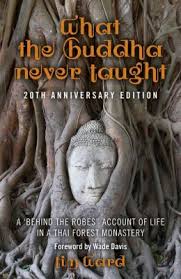The mind is like a monkey, say the Buddhists. It hops from place to place, restless and wild. We have no control over it. Our sensations, perceptions, memories, wills and thought chatter erratically in our heads. There is no peace. The aim of meditation is to learn first how to control the monkey mind; then to be free of it. This is not how the West views the mind.
But the goal of meditation can also be considered in terms of science, according to right brain/left brain psychology. The two hemispheres of the cerebrum control different activities. The left hemisphere generates linear thought. It is conceptual, abstract, verbal. It gives us our words and ideas. The right hemisphere generates non-linear thought. It is intuitive, creative, imaginative. The left hemisphere is the dominant partner in most human activities; it seldom relinquishes control. It thrives on complex tasks and if not fully taxed, will wander distractedly. The right brain is easily absorbed with just the sort of simple activities the left side find tedious. For example, if required to concentrate on the mundane simplicity of breathing, the left brain will rebel. It will want to think of something more interesting. But if attention is continually returned to breathing, the left may eventually give control to the right brain. When this happens, a distinct mental shift will be experienced. Restlessness will cease as the right brain takes over. A person in this condition will relax into peaceful contemplation. Viewed in this way, meditation is a therapy for lessening left brain dominance. As the passive right brain learns how to be in control, enabling us to lead more creative and intuitive lives, this restores a balance in our own human nature.
I sit on the porch of my hut in the jungle and concentrate on the trembling sensation of breath in my nostrils. The ease of absorption begins to come at last. “Hey, now I’m getting somewhere! This is meditation!” Concepts spring into awareness, shattering the calm. One word, one thought leads to the next. The chattering left brain takes over like a bully.
“Yes, I’m finally meditating. Well, almost there for a second. Sure is hot now. When’s coffee break?”
One tool for restraining the monkey mind when it breaks unbidden into meditation is the use of a mantra, such as the “Bud-dho” suggested by Ajahn (the head monk, whose title means “teacher”). The right brain may be too weak at first to sustain control of so subtle an object as the breath. The left can easily intrude when it has not been tamed to be silent. Repeating a mantra forces the flow of thought back to a single sequence. The left brain can tolerate this for a short while, because a mantra is at least verbal. But it is boring. Repeating “Buddho, Buddho, Buddho” a hundred thousand times is not its idea of fun. It will struggle to break the sequence. But like links of a chain, the words are firmly connected to one another.
“Bud-dho, Bud-dho, Bud-dho, Bud …what time is it now? I must have been sitting near to an hour. Where’s the coffee bell? The Ajahn – l’m not meditating, Bud-dho, Bud-dho. Cof-fee. Thoughts keep creeping back in. I have to concentrate hard, keep repeating Bud-dho, Bud-dho, and perhaps there will be cocoa. Does Coffeemate violate the Vinaya? Argh, Argh, Bud-dho.
*********
Tim Ward is the author of six books, including the best-selling What the Buddha Never Taught and Savage Breast: One Man’s Search for the Goddess. His travel stories have appeared in 13 anthologies. They live in Bethesda, Maryland.
What the Buddha Never Taught: 20th Anniversary Edition – A ‘behind the robes” account of life in a Thai forest monastery, new edition published by Changemakers Books. ISBN: 978-1-78279-203-1 (Paperback) £11.99 $20.95, EISBN: 978-1-78279-202-4 (eBook) £6.99 $9.99.

